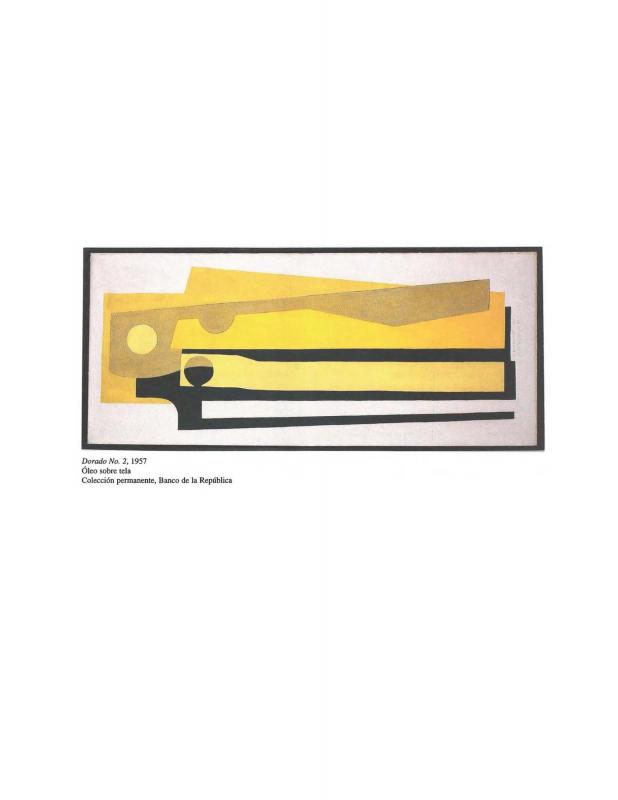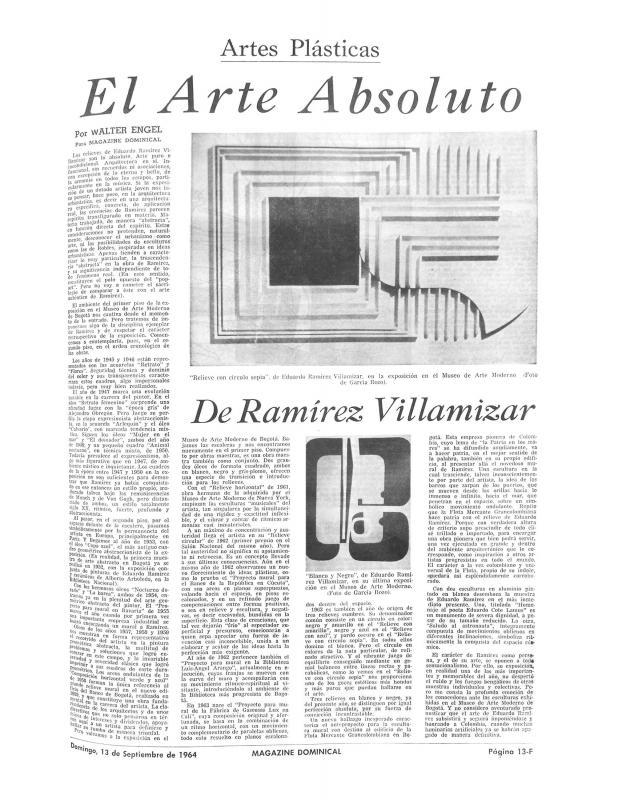This conversation with the Colombian sculptor and painter Eduardo Ramírez Villamizar (1922–2004) helps considerably to understand a little-known and seldom-studied aspect of this artist’s contribution: his work as a political reflection on Colombia and Latin America. In artistic circles, he is considered one of the pioneers of Colombian abstract art. In important articles about this seminal artist, such as “El Arte Clásico de Eduardo Ramírez Villamizar” [The Classical Art of Eduardo Ramírez Villamizar] [see doc. no. 1093722] by the Polish writer Casimiro Eiger, and “El Arte Absoluto de Ramírez Villamizar” [The Absolute Art of Ramírez Villamizar] [doc. no. 1093770] by Walter Engel, from Vienna, published in the mid-twentieth century, Ramírez Villamizar’s abstract work has been described as self-referential, pure, untainted by any external reference, totally rational, and strictly focused on form. After nearly fifty years, this view of Ramírez Villamizar’s work is still accepted and is still expressed by those who write about his work, even now at the dawn of the twenty-first century.
What is interesting about this interview is that it reveals that the artist’s work goes beyond such classifications and in fact includes political ideas that are related to the “real world,” far beyond the strict field of art and form.
Ramírez Villamizar states that, in a chaotic, irregular, violent and destructive reality, it seemed more meaningful to construct, to use materials in an orderly way, to create balanced geometrical work and to seek states of equilibrium. He believes that his work reflects even greater political commitment than those who seek to “depict the situation literally, showing violence, poverty, heartbreaking scenes of women in despair, children screaming, bombed-out cities. Their work is almost like a photographer’s record of those pitiful scenes. I started out doing that, but then I became interested in reconstruction, in constructivism. To construct, to make things, not to show what has been destroyed, but to start from the beginning; to build rungs and gradually make a ladder. That’s why I chose geometrical art.” This document reveals a little-known aspect of this artist: his political commitment, using abstract art as a reflection and a response to the violence in Colombia.


